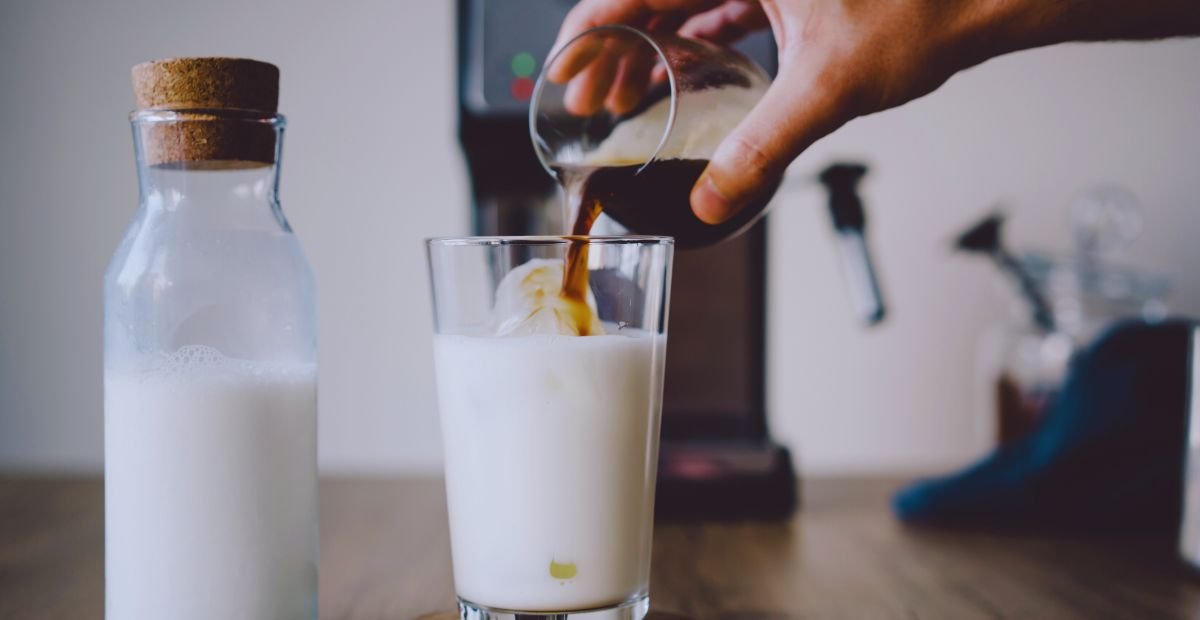How to Make Coffee with Ground Coffee

Coffee, the beloved elixir of life for many, has the power to transform a groggy morning into a productive day or turn a cozy afternoon into a delightful coffee break. While there are various ways to brew coffee, using ground coffee beans is a timeless and cherished method.
In this comprehensive guide, we will unravel the mysteries of how to make coffee with ground coffee beans. Moreover, we’ll dive into the world of crafting coffee with ground beans and explore various methods, so you can make coffee with or without a coffee maker.
Using a Coffee Maker
A freshly brewed cup of coffee is a comforting ritual for many, and mastering the art of using a coffee maker is a skill worth cultivating. With the right equipment, knowledge, and a dash of passion, you can elevate your coffee game and enjoy consistently delicious brews. In this guide, we’ll take you through the essential steps to make the most of your coffee maker.
Choosing the Right Grind
Before you even think about turning on your coffee maker, the first crucial step is selecting the right coffee grind. The grind size of your coffee beans directly influences the flavor and strength of your brew. Here’s a quick breakdown of the grind sizes and their suitable brewing methods:
- Coarse Grind: Ideal for French press brewing. The coarse grounds allow for a longer extraction time, resulting in a robust, full-bodied coffee.
- Medium Grind: Suitable for drip coffee makers. It strikes a balance between extraction time and flavor, producing a classic cup of coffee.
- Medium-Fine Grind: Perfect for pour-over and Aeropress methods. This grind allows for a quicker extraction, resulting in a bright, flavorful brew.
- Fine Grind: Reserved for espresso machines. The fine grounds require high pressure for extraction, yielding a concentrated, bold coffee.
Ensure your coffee grinder is set to the appropriate grind size to match your brewing method, as this will greatly impact the quality of your coffee.

Measuring the Coffee
Achieving the right coffee-to-water ratio is crucial for a consistently great cup of coffee. While the exact measurements can vary depending on your taste preferences and the coffee maker’s capacity, a general guideline is to use one to two tablespoons of coffee grounds for every six ounces of water. However, feel free to adjust this ratio to suit your taste, making your coffee stronger or milder as desired.
Using the Coffee Maker
Now, let’s dive into the steps for using your coffee maker:
- Water Quality: Start with fresh, filtered water. Avoid using tap water with strong odors or flavors, as it can adversely affect your coffee’s taste.
- Prep the Coffee Maker: Ensure your coffee maker is clean and ready for use. If you’re using a drip coffee maker, insert a clean filter into the basket.
- Add Coffee Grounds: Measure the appropriate amount of coffee grounds for your brew and place them in the filter or coffee basket.
- Water Measurement: Carefully measure the cold water according to your coffee maker’s capacity. Pour the water into the coffee maker’s reservoir.
- Brew: Turn on your coffee maker and let it work its magic. The hot water will flow through the coffee grounds, extracting their flavors and aromas.
- Wait Patiently: Allow the brewing process to complete without interruption. Rushing this step can lead to an under-extracted brew with subpar flavor.
- Pour and Enjoy: Once your coffee maker has finished brewing, pour the freshly brewed coffee into your favorite mug. If you like, add cream, sugar, or other flavorings to taste.
Cleaning the Coffee Maker
To ensure that your coffee maker continues to produce excellent coffee, regular cleaning is essential. Here are some key cleaning tips:
- Daily Cleaning: Empty the used coffee grounds and rinse the coffee basket or filter. Clean the carafe, lid, and any removable parts with warm, soapy water.
- Weekly Cleaning: Run a cycle with a mixture of equal parts water and vinegar to descale the internal components. Follow this with a few rinse cycles using clean water to remove any residual vinegar taste.
- Monthly Cleaning: Remove and clean any removable parts and check for mineral buildup. Scrub the parts if necessary and ensure they are completely dry before reassembling.
Making Coffee Without a Coffee Maker
Coffee, that beloved elixir, is a universal favorite, but you don’t always need a fancy coffee maker to enjoy a satisfying cup. Whether you find yourself without your trusty machine or you simply want to explore alternative brewing methods, making coffee without a coffee maker can be an enjoyable and rewarding experience.
Using a French Press
What You’ll Need:
- French Press: This simple device consists of a glass or stainless steel container with a plunger and a metal or mesh filter.
- Coffee Beans: Opt for freshly ground coffee beans to ensure the best flavor.
- Hot Water: Heat water to just below boiling, around 200°F (93°C).
Steps:
- Measure the Coffee: For a standard 8-cup French Press, use about 1 ounce (28 grams) of coarsely ground coffee.
- Add Coffee to the French Press: Place the coffee grounds into the bottom of the French Press.
- Pour Hot Water: Carefully pour the hot water over the coffee grounds, ensuring even saturation. Leave some space at the top to prevent spills.
- Stir and Steep: Gently stir the coffee-water mixture to ensure all the grounds are evenly wet. Place the lid on the French Press, but do not plunge it down just yet. Let the coffee steep for about 4 minutes.
- Plunge and Pour: After the steeping time, slowly press down the plunger to separate the grounds from the liquid. Pour the freshly brewed coffee into your favorite mug and enjoy!
Making Cold Brew Coffee
What You’ll Need:
- Coarsely Ground Coffee: About 1 cup (140 grams) of coarsely ground coffee.
- Cold Water: 4 cups (1 liter) of cold, filtered water.
- A Large Jar or Pitcher: Ensure it has a lid or cover.
Steps:
- Combine Coffee and Water: In your large jar or pitcher, mix the coarsely ground coffee with the cold water. Stir well to ensure even saturation.
- Cover and Refrigerate: Cover the container and place it in the refrigerator. Allow the mixture to steep for at least 12 hours, but 18-24 hours is even better for a stronger flavor.
- Strain and Serve: After steeping, strain the cold brew through a fine-mesh sieve or a coffee filter to remove the coffee grounds. Dilute the concentrate with water or milk to your preferred strength, add ice, and enjoy!
Cowboy Coffee Method
What You’ll Need:
- Coarsely Ground Coffee: About 2 tablespoons of coarsely ground coffee per 6 ounces of water.
- Water: Cold, filtered water.
- Kettle or Pot: For heating water.
- Mug or Cup: To enjoy your coffee.
Steps:
- Heat Water: In a kettle or pot, heat the water until it’s almost boiling but not at a rolling boil.
- Coffee Grounds: Place the coarsely ground coffee directly into the pot of hot water. Stir it briefly.
- Steep: Let the coffee steep for about 4-5 minutes. This allows the coffee grounds to settle at the bottom.
- Pour Slowly: To avoid transferring coffee grounds, pour the coffee slowly into your mug. You can use a strainer or simply pour it gently.
- Enjoy: Sip your cowboy coffee and embrace the bold, rustic flavors.
Each of these methods offers a unique coffee experience, from the smooth richness of French Press coffee to the cool, refreshing delight of cold brew and the rugged charm of cowboy coffee.
Experiment with each method to find your favorite, and you’ll discover that making coffee without a coffee maker can be just as satisfying as using one.
Grinding Fresh Coffee
The journey to a perfect cup of coffee begins long before the brewing process. It starts with the quality of the coffee beans and how they are ground. Grinding fresh coffee is a crucial step in the quest for the ultimate coffee experience.
Choosing the Right Grind Size
The grind size of your coffee beans is one of the most critical factors influencing the taste and strength of your brew. Different brewing methods require distinct grind sizes to extract the optimal flavors. Here’s a breakdown of the main grind sizes and their suitable brewing methods:
- Coarse Grind: Ideal for French press coffee. The coarse grounds allow for a longer extraction time, resulting in a robust, full-bodied brew.
- Medium Grind: Perfect for drip coffee makers. It strikes a balance between extraction time and flavor, yielding a classic cup of coffee.
- Medium-Fine Grind: Best for pour-over and Aeropress methods. This grind size permits a quicker extraction, producing a bright, flavorful brew.
- Fine Grind: Reserved for espresso machines. The fine grounds necessitate high pressure for extraction, resulting in a concentrated, bold coffee.
To determine the right grind size for your brewing method, consult your coffee maker’s manual or the guidelines provided by your coffee bean supplier. Experimentation is also key to finding your personal preference.
Grinding the Coffee Beans
Now that you’ve identified the ideal grind size, it’s time to grind those coffee beans. Here’s a step-by-step guide to ensure you get the most out of this essential process:
What You’ll Need:
- Whole Coffee Beans: Opt for high-quality, fresh coffee beans.
- Coffee Grinder: Invest in a quality grinder. There are two main types: blade grinders and burr grinders. Burr grinders are preferred for their consistency in grind size.
Steps:
- Measure the Beans: Determine the amount of coffee you need based on your desired brew strength and the instructions for your chosen brewing method. As a general guideline, use about 1 to 2 tablespoons of coffee for every 6 ounces of water.
- Preheat Your Grinder: If you’re using an electric grinder, let it run for a few seconds to warm up the blades or burrs. This reduces static electricity, which can cause uneven grinding.
- Add Coffee Beans: Pour the measured coffee beans into the grinder’s hopper. Make sure not to overfill it to ensure even grinding.
- Select the Grind Size: Adjust the grinder to the appropriate setting for your chosen brewing method. Refer to the grind size chart above for guidance.
- Start Grinding: Turn on the grinder and let it work its magic. For blade grinders, hold down the button until you achieve the desired consistency. Burr grinders will automatically produce a uniform grind size.
- Check the Consistency: After grinding, examine the coffee grounds. They should be uniform in size and match the chosen grind setting.
- Empty the Grinder: Carefully tap the grinder to remove any remaining grounds and transfer the freshly ground coffee to your brewing apparatus.
- Brew and Enjoy: Brew your coffee immediately to capture the maximum flavor and aroma. Savor the delightful results of your freshly ground beans.
Alternative Brewing Methods
While the classic drip coffee maker is a dependable go-to for many coffee lovers, the world of coffee brewing is rich with creativity and diversity. If you’re eager to expand your coffee horizons and explore alternative brewing methods, you’re in for a treat.
Using an Espresso Machine
The Espresso Machine: Often associated with the bold and intense flavors of espresso, these machines are versatile and capable of producing a wide range of coffee beverages.
Steps:
- Prepare Your Beans: Start with fresh, high-quality coffee beans. Espresso requires a fine grind, so adjust your grinder accordingly.
- Tamp the Coffee: Fill the portafilter basket with the finely ground coffee. Tamp it down evenly with a tamper to ensure uniform extraction.
- Brew: Place the portafilter into the machine, start the extraction, and let the espresso flow. The process should take around 25-30 seconds for a perfect shot.
- Enjoy: Sip your rich, aromatic espresso straight or use it as a base for various coffee creations like lattes, cappuccinos, or Americanos.
Using an Aeropress
The Aeropress: Known for its portability and simplicity, the Aeropress offers a quick and effective way to brew coffee.
Steps:
- Prepare Your Beans: Grind your coffee beans to a medium-fine consistency, similar to table salt.
- Assemble the Aeropress: Place a filter in the filter cap and attach it to the bottom of the Aeropress. Set it over a sturdy mug.
- Add Coffee: Add the ground coffee to the Aeropress chamber. Use the funnel provided to avoid spillage.
- Brew: Pour hot water (about 200°F or 93°C) into the Aeropress, saturating the coffee grounds. Stir gently for about 10 seconds.
- Press: Attach the plunger and press down slowly and steadily for about 20-30 seconds until you hear a hissing sound.
- Enjoy: Remove the Aeropress, and your freshly brewed coffee is ready to enjoy. You can dilute it with hot water to adjust the strength to your liking.
Using a Coffee Bag
The Coffee Bag: This convenient option is perfect for on-the-go coffee lovers or those looking for a hassle-free way to brew a single cup.
Steps:
- Boil Water: Heat water to the desired temperature, usually around 200°F (93°C).
- Prepare the Bag: Tear open the coffee bag and hang the handles on the rim of your cup.
- Pour Water: Slowly pour the hot water over the coffee grounds inside the bag.
- Steep: Let the coffee steep for about 3-5 minutes, depending on your preferred strength.
- Remove and Dispose: Once steeped, carefully remove the bag, dispose of it, and your coffee is ready to enjoy.

Tips for Making Great Coffee
1. Using a Coffee Filter
Tip: Invest in High-Quality Filters
When using a drip coffee maker or pour-over method that requires a coffee filter, choose high-quality, unbleached filters. These filters not only reduce the risk of unwanted flavors but also help maintain the integrity of your coffee’s taste.
2. Experimenting with Brew Methods
Tip: Explore Various Brewing Techniques
Don’t limit yourself to just one brewing method. Experiment with different methods such as French press, Aeropress, pour-over, or cold brew to discover the unique flavors and nuances each method can bring out in your coffee. Each technique offers a distinct taste profile, allowing you to find your coffee nirvana.
3. Using a Drip Coffee Maker
Tip: Clean Your Coffee Maker Regularly
A well-maintained drip coffee maker is essential for brewing great coffee. Regularly clean all components, including the water reservoir, filter basket, and coffee pot, to prevent the buildup of coffee oils and residue. This maintenance ensures a clean and flavorful brew every time.
4. Using a Coffee Pot
Tip: Invest in a Thermal Coffee Pot
If you use a coffee pot to keep your coffee warm, consider switching to a thermal coffee pot. These insulated pots maintain the coffee’s temperature without the need for a warming plate. This prevents the coffee from becoming overcooked or bitter, preserving its flavor for longer.
5. Properly Adding Coffee to Water
Tip: Measure Your Coffee
Achieving the right coffee-to-water ratio is vital for a great cup of coffee. Use a kitchen scale or measuring cups to ensure you’re adding the correct amount of coffee for the desired strength. A general guideline is one to two tablespoons of coffee for every six ounces of water, but feel free to adjust according to your taste.
Bonus Tip: Pre-wet Your Coffee Grounds
Before starting the brewing process, especially in methods like pour-over, pre-wet the coffee grounds with a small amount of hot water. This helps “bloom” the coffee, releasing carbon dioxide gas and allowing for a more even extraction of flavors.
Frequently Asked Questions About how to make coffee with ground coffee
Do you just mix ground coffee with water?
No, the process of making coffee is more complex than just mixing ground coffee with water. Coffee making involves various methods like drip brewing, French press, espresso, and pour-over brewing. Drip brewing produces clean, consistent cups, while French press produces full-bodied, flavorful ones. Pour-over brewing allows precise control over water temperature and pouring technique.
Can I use ground coffee directly?
No, you cannot use ground coffee directly. Ground coffee is not suitable for direct use in brewing methods, but can be used as plant fertilizer, scrubbing agents, and skin care products. It can be substituted for instant coffee powder in baking recipes, but finely ground.
What is the best way to make ground coffee?
Ground coffee quality depends on quality, brewing methods, and beans. Choose high-quality beans, grind for different methods, and use the right ratio of coffee to water, using 1 to 2 tablespoons per 6 ounces of water.
What do you mix with ground coffee?
Mix ground coffee with milk, cream, sugar, spices, vanilla, whipped cream, or ice for enhanced flavor. For indulgence, add whipped cream and cocoa powder. Steep in cold water overnight.
Can I put ground coffee in boiling water?
Boiling ground coffee in boiling water can cause bitterness and over-extraction of flavors. Instead, use water at the appropriate temperature for your brewing method. Examples include drip brewing, French press, espresso, and pour-over. These methods allow for optimal flavor extraction and a well-balanced cup. If you prefer brewing without a coffeemaker, try using a deep bowl and pouring boiling water over the grounds.
Is ground coffee like instant coffee?
No, they are different. Ground coffee is a powdery, sandy consistency, while instant coffee is made by extracting soluble parts and drying them. Ground coffee has better flavor, higher caffeine content, and a shorter brewing time. Freshly brewed ground coffee is preferred for its complex flavor.
How to make coffee from ground coffee powder?
Ground coffee powder can be used in various brewing methods like drip, French press, espresso, and pour-over. Each method has its unique characteristics, and it’s crucial to use freshly roasted whole beans and grind them just before brewing for optimal flavor.

Conclusion
In conclusion, mastering how to make coffee with ground coffee is not just a skill; it’s an art that allows you to craft the perfect cup of coffee without the need for a coffee maker.
Whether you’re brewing with a traditional coffee pot or exploring alternative methods to make coffee without a coffee maker, the key lies in understanding the grind, measuring with precision, and embracing the process of brewing.
With every cup you brew, whether you’re aiming for a simple brew or the perfect cup of coffee, you’re on a journey of flavor discovery and coffee-making creativity.
So, explore the diverse techniques available and savor the richness of each brew, for it’s not just about coffee; it’s about the joy of making that perfect cup of coffee every time.




